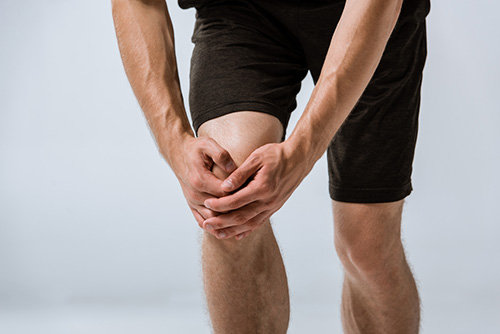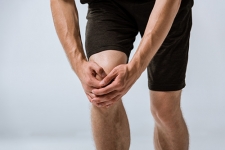
The good news is ACL tears are all too common; in fact, ACL tears are increasing. The bad news is you have months of recovery and therapy ahead of you. You might be wondering: How can I prevent this in the first place?
The Anterior Cruciate Ligament (ACL) plays a role in conjoining three bones: your thighbone (femur), shinbone (tibia) and kneecap (patella). The ACL works with your Posterior Cruciate Ligament (PCL), Lateral Collateral Ligament (LCL), Medial Collateral Ligament (MCL) and meniscus to keep the knee functioning properly.
ACL injuries mostly occur through non-contact situations, often associated with abruptly pivoting, cutting and awkward landings. Studies indicate female athletes have a higher incidence of ACL injuries than males due to differences in conditioning, muscular strength and neuromuscular control.
Symptoms of an ACL tear
Swelling and knee instability are common immediately after an ACL tear. Patients will experience heavy swelling within 24 hours, accompanied by a loss of range in motion, tenderness, discomfort and instability while walking.
Most doctors can identify ligament injuries with a thorough physical examination of the knee. Since half of all ACL injuries occur with damages to other ligaments, cartilage or meniscus as well, patients will likely go through x-ray and MRI procedures to examine any additional damage.
Repair
The first question to ask is if surgery is necessary. People can live with an ACL tear but often experience increases in knee damage throughout the years. It’s important to note that surgery does not depend on age, but a person’s activity level.
For instance, a patient who lives a sedentary lifestyle only engages in low-impact activities or is willing to give up high-impact sports can avoid ACL surgery. Using a hinged knee brace will help minimize stability issues but can still lead to secondary knee injuries related to instability.
Children with open growth plates will likely have to wait for surgery. ACL surgery can damage growth plates and cause bone growth problems. This means doctors will wait until the child is closer to muscular maturity or modify the surgery—if possible—to avoid growth plate damage.
Patients who receive surgery will go through physical therapy beforehand until they gain mobility again to avoid mobility problems after surgery. During surgery, doctors will remove the torn ligament and replace it with either a patellar, hamstring, and quadricep tendon or a cadaver. The surgery is relatively quick and most patients are home on the same day.
Therapy
Regardless if a patient receives surgery or not, all patients with ACL tears must go through physical therapy. This allows patients to regain mobility, reduce swelling and strengthen the surrounding muscles. This is especially important for patients who do not receive surgery. Your knee is less stable without an ACL and strengthening the surrounding muscles compensates for the torn tendon.
Prevention
Sometimes an injury is unavoidable, but there are ways to aid a healthy ACL to avoid any tears. Similar to the therapy portion of the healing process, strengthening the muscles around your knees—quadriceps, hamstrings and calves—can help stabilize the knee and take pressure off your ACL during activities which could tear it. Effective flexibility cannot only prevent tears in your ACL but in most muscles and tendons throughout your body as well.
Strengthening your ACL requires exercise, but exercise is what would likely tear the ACL in the first place. This can be easily avoided with proper form, appropriate rest and a balanced workout. For instance, imbalances in the strength of your hamstrings and quadriceps can lead to an ACL tear. Make sure you’re using proper lifting form and getting adequate rest to avoid a preventable injury.
For more information on the prevention and treatment options available contact our Board Certified Physical Therapists or Orthopedic Surgeons at Prairie Orthopaedic & Plastic Surgery.

